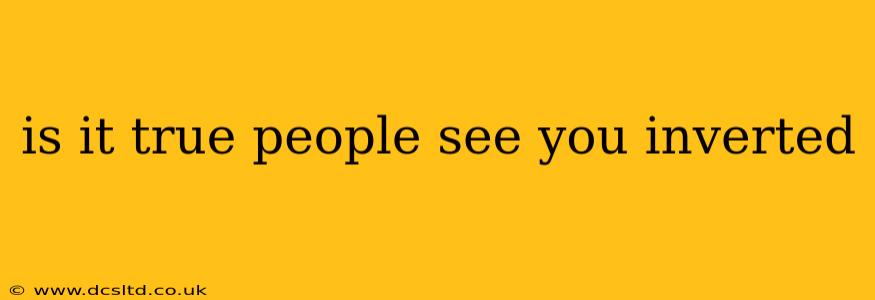Is It True People See You Inverted? A Look at Visual Perception
The short answer is: no, people do not see you inverted. This is a common misconception stemming from a misunderstanding of how our visual system works. While the image projected onto our retina is indeed inverted, our brain processes and corrects this inversion, presenting us with an upright image of the world.
Let's dive deeper into the complexities of visual perception to understand why this is the case.
How Does Our Vision Actually Work?
Light rays enter the eye and pass through the lens, focusing an inverted image onto the retina. The retina, a light-sensitive tissue lining the back of the eye, contains photoreceptor cells (rods and cones) that convert light into electrical signals. These signals are then transmitted through the optic nerve to the brain.
This is where the magic happens. The brain doesn't simply receive a flipped image and interpret it as such. Instead, a complex process of neural processing occurs within the visual cortex, a region of the brain dedicated to vision. This processing reorients the inverted image, allowing us to perceive the world correctly.
What About the "Inverted Retina" Argument?
The fact that the image on the retina is inverted often leads to the misconception that we see the world upside down. However, this ignores the crucial role of the brain in interpreting visual information. Think of it like this: the retina is merely a sensor; the brain is the interpreter, and it's the interpreter that corrects the inversion.
Why This Misconception Exists?
This misconception likely stems from simplified explanations of how vision works. Focusing solely on the inverted retinal image without explaining the brain's corrective role creates confusion. It's a bit like explaining a computer's function solely by describing the hardware without mentioning the software – you only get half the picture.
What Happens if the Visual Pathway is Damaged?
Damage to the visual pathways or the visual cortex can lead to a variety of visual disturbances. While inverted vision isn't a typical symptom, other issues like visual field defects, distorted vision, or even complete blindness can occur. These conditions highlight the intricate and complex nature of visual processing.
So, to reiterate, do we see the world upside down?
No. The inversion on the retina is a biological detail, not a perceptual reality. Our brains actively process and correct this inversion, providing us with a right-side-up view of the world. The process is automatic and happens without conscious effort. We experience the world as it is, upright and correctly oriented, thanks to the sophisticated workings of our visual system.
